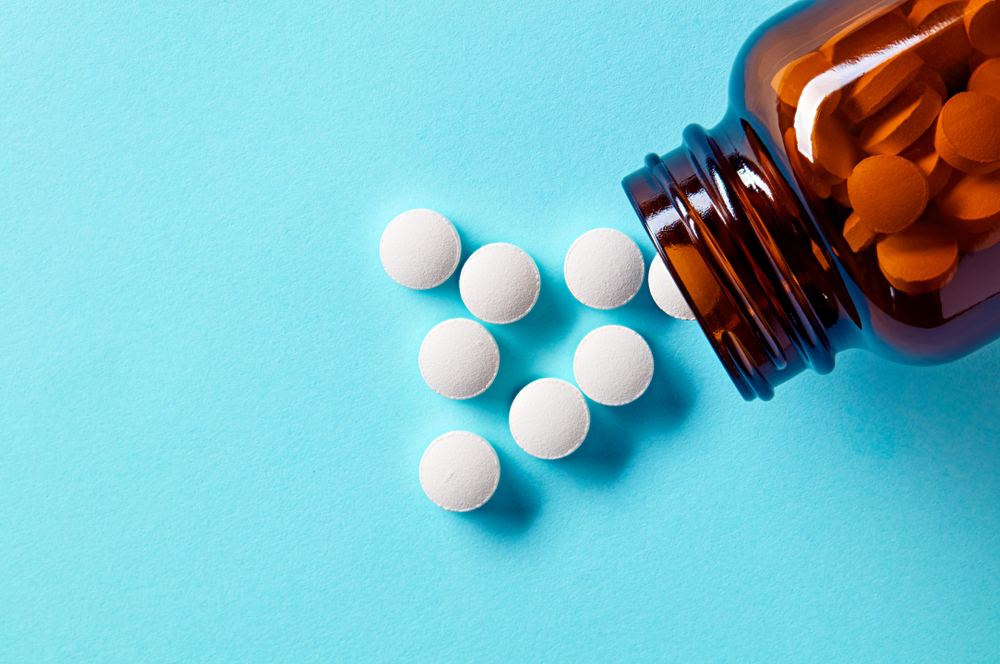


Paracetamol (acetaminophen) is a widely used over-the-counter medication for pain relief. If it is used at the correct dose, it is safe for both adults and children. Taking a high dose or taking it for too long can lead to liver damage, which can be fatal. It is important to realise that many medications, including cough and cold preparations, contain paracetamol, making it possible to be taking more than you realise.
Like other medications, paracetamol is processed in your liver and removed through your kidneys and urine. However, when your liver breaks down paracetamol, a highly toxic byproduct is created. This is called N-acetyl-p-benzoquinone imine (NAPQI).
Normally, your liver makes a powerful antioxidant called glutathione that binds to NAPQI and reduces the toxic effects but when a large dose of paracetamol is taken, or too much taken over a period of time, your liver becomes overwhelmed and cannot produce enough glutathione. NAPQI builds up in the liver and causes damage.
This test measures the level of paracetamol in a sample of blood.
A paracetamol overdose is an emergency. If you think you have taken too much, it is important seek urgent medical help. Early diagnosis and treatment are important for a positive outcome. For children who have taken paracetamol in liquid form, it is important to provide treatment as soon as two hours after ingestion since the medication is absorbed more rapidly in this form.
Most paracetamol overdoses do not immediately lead to symptoms and people who overdose do not always realise they have been poisoned. However, taking as few as 10 to 20 normal dose (500 milligram) paracetamol tablets at once can cause serious, possibly fatal liver damage.
It is likely that there will be no symptoms of poisoning for 24-36 hours after taking the paracetamol even if a potentially fatal dose has been ingested. it is important that treatment is given within eight to 12 hours. The risk increases if you already have liver disease or if you are malnourished.
Since high levels of paracetamol can be toxic to the liver, your medical team may also order tests such as liver function tests, including AST and ALT to look for liver damage along with kidney function tests to make sure your kidneys are not damaged. A prothrombin time (PT) test may also be used to make sure your blood is clotting normally.
Sample
Blood
Preparation
None
Reading your test report
Your results will generally be presented along with those of your other tests on the same form. You will see separate columns or lines for each of these tests.
Measuring your blood paracetamol level at a known time point between four and 15 hours after a single overdose has been taken can show the likelihood of liver damage developing after two or three days.
The result will help your medical team decide on whether antidote treatment is needed to reduce the risk of liver damage. Treatment may include the antidote, N-acetylcysteine (NAC), which can help reduce damage to the liver.
| Paracetamol level | Indication |
| Less than 195 mg/L (or less than 1,300 µmol/L) at four hours after ingestion | Low risk of liver damage |
| Higher than 195 mg/L (or higher than 1,300 µmol/L) at four hours after ingestion | Possible toxicity and liver damage |
| These levels apply to a single ingestion of a toxic amount of paracetamol. If more than the recommended dose of paracetamol has been taken over a period of time your medical team will take your paracetamol levels into account along with symptoms and the results of liver function tests to decide on your risk of liver damage. | |
If your results are flagged as high or low this does not necessarily mean that anything is wrong. Your doctor needs to take your medical history to help interpret your result.
The choice of tests your doctor makes will be based on your medical history and symptoms. It is important that you tell them everything you think might help.
You play a central role in making sure your test results are accurate. Do everything you can to make sure the information you provide is correct and follow instructions closely.
Talk to your doctor about any medications you are taking. Find out if you need to fast or stop any particular foods, medications or supplements. These may affect your results. Ask:
Pathology and diagnostic imaging reports can be added to your My Health Record. You and your healthcare provider can now access your results whenever and wherever needed.
Get further trustworthy health information and advice from healthdirect.